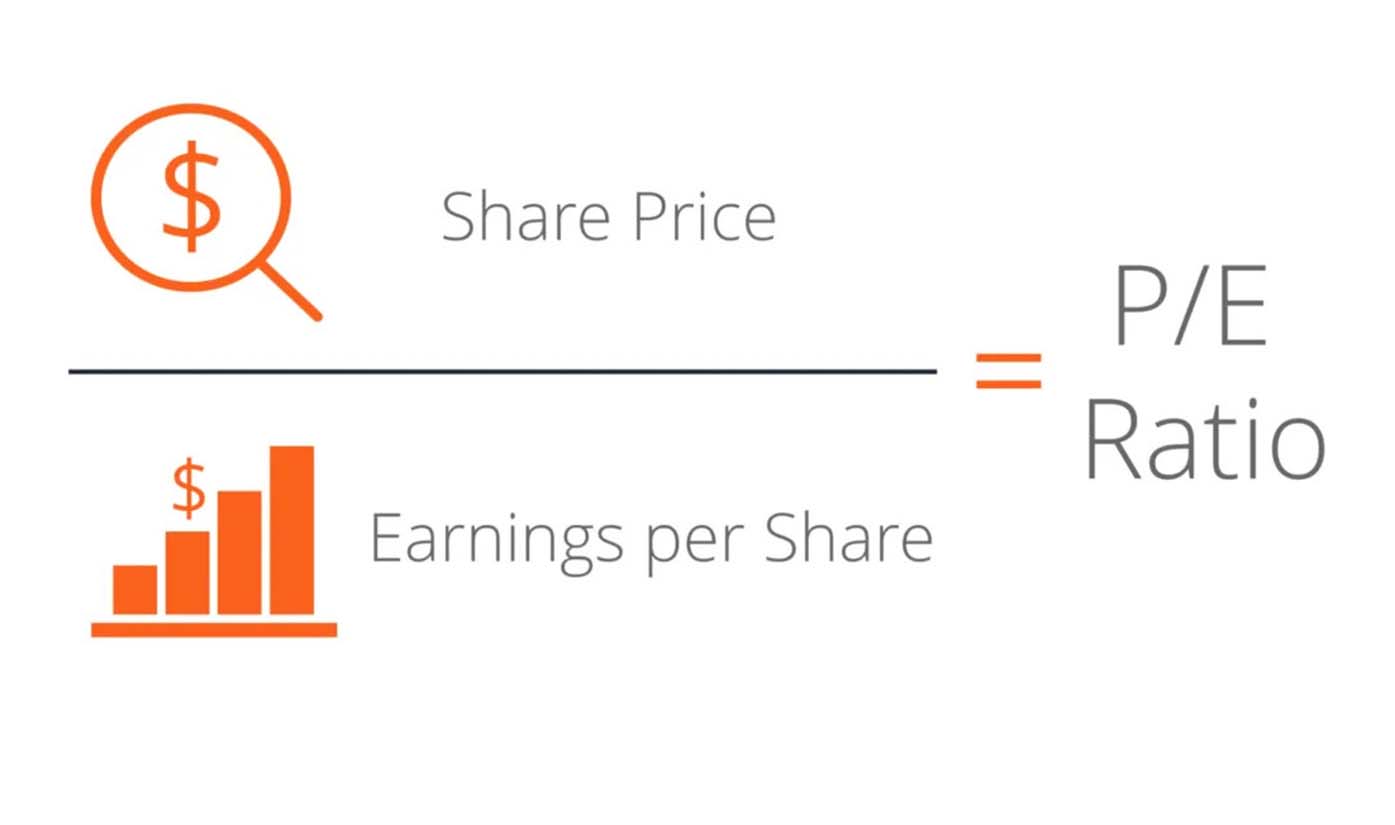If you’re an investor who wants to understand how to evaluate stocks, the Price-to-Earnings (P/E) ratio is likely one of the first metrics you’ll encounter. This ratio is one of the most widely used indicators in the world of finance and investing, and it’s a key tool for evaluating a company’s stock price relative to its earnings. But, like any tool, it’s essential to understand how to use it effectively and when to rely on it in the context of other financial metrics.
We’ll break down the P/E ratio in-depth, explore how to use it for stock valuation, provide specific recommendations for investors, and walk through the types of investment products where the P/E ratio can be most helpful.
What is the Price-to-Earnings (P/E) Ratio?
The P/E ratio is a financial metric used to assess the relative value of a company’s stock. It is calculated by dividing the stock’s current market price by its earnings per share (EPS). The formula looks like this:
P/E Ratio=Market Price per ShareEarnings per Share (EPS)\text{P/E Ratio} = \frac{\text{Market Price per Share}}{\text{Earnings per Share (EPS)}}
This ratio tells you how much investors are willing to pay for each dollar of a company’s earnings. In other words, it indicates how expensive or cheap a stock is in relation to its earnings. The higher the P/E ratio, the more investors are willing to pay for each unit of earnings, often indicating that they expect higher growth in the future. Conversely, a lower P/E ratio can indicate that a stock is undervalued or that investors have lower growth expectations for the company.
Example:
If a company’s stock is trading at $50 per share and its EPS is $5, the P/E ratio would be:
505=10\frac{50}{5} = 10
This means that investors are willing to pay $10 for every $1 the company earns in profit.
Interpreting the P/E Ratio
The P/E ratio is useful because it provides a snapshot of how the market views a company’s future growth prospects. However, it’s essential to remember that it is just one piece of the puzzle. A high P/E ratio might suggest that a stock is overvalued, or it could be an indication of high future growth potential. Similarly, a low P/E ratio might suggest that a stock is undervalued or that the company is facing issues that could affect its earnings.
Let’s break down the different types of P/E ratios you might encounter:
1. High P/E Ratio
- A high P/E ratio generally means that investors are willing to pay a premium for the stock, anticipating that the company’s earnings will grow significantly in the future. However, a high P/E ratio can also signal that the stock is overpriced.
- High P/E stocks are typically seen in growth sectors like technology or biotech.
- Example: If a tech startup has a P/E ratio of 40, it means that investors are expecting significant growth, which is common in high-growth industries.
2. Low P/E Ratio
- A low P/E ratio might indicate that a company is undervalued, presenting a potential opportunity for investors. However, it can also signal that the company is facing challenges, such as declining earnings or unfavorable market conditions.
- Low P/E ratios are often found in more mature industries or companies with lower growth expectations.
- Example: If a utility company has a P/E ratio of 8, it could suggest that the stock is undervalued compared to its earnings potential, or that the company is growing slowly.
3. Negative P/E Ratio
- A negative P/E ratio occurs when a company’s earnings are negative (i.e., the company is losing money). This can happen during startup phases, economic downturns, or when a company is facing severe financial issues.
- Example: A startup tech company might have a negative P/E ratio due to large upfront investments and no profits yet, but if the company has a strong growth trajectory, this could still be an opportunity.
How to Use the P/E Ratio for Stock Valuation
The P/E ratio alone doesn’t give you a complete picture of a stock’s valuation. It’s crucial to analyze it in context. Here’s how to effectively use the P/E ratio in your stock analysis:
1. Compare with Industry Peers
- To evaluate whether a stock is overvalued or undervalued, compare its P/E ratio with the average P/E ratio of its industry peers.
- If a company has a P/E ratio that is significantly higher than the industry average, it might be overvalued. However, if the company’s growth prospects justify the higher valuation, it may still be a worthwhile investment.
- Example: If the average P/E ratio for companies in the retail sector is 15, and a company has a P/E ratio of 25, you might want to dig deeper into its future growth potential to justify that premium.
2. Look at the Historical P/E of the Stock

- Compare the current P/E ratio to the stock’s historical P/E ratios. If the P/E is significantly higher than its historical average, it may indicate that the stock is overpriced.
- However, a rising P/E ratio over time can also indicate that the market is becoming more confident in the company’s growth, and it may reflect real business improvements.
- Example: If a company’s P/E ratio has traditionally been around 12, and now it’s at 18, this could indicate the stock is becoming more expensive.
3. Examine the Earnings Growth
- A high P/E ratio can be justified if a company has strong growth prospects. Look for companies that are expected to grow earnings rapidly. If a company’s P/E ratio is high but its earnings are growing consistently, it might be a good investment.
- Use the PEG ratio (Price-to-Earnings Growth ratio) to get a clearer picture. The PEG ratio is calculated by dividing the P/E ratio by the annual earnings growth rate.
- Formula:
PEG Ratio=P/E RatioEarnings Growth Rate\text{PEG Ratio} = \frac{\text{P/E Ratio}}{\text{Earnings Growth Rate}}
A PEG ratio under 1 typically indicates that a stock is undervalued relative to its growth rate.
4. Use P/E in Combination with Other Metrics
- While the P/E ratio is valuable, it’s essential to use it in conjunction with other metrics. For example:
- Price-to-Book (P/B) Ratio: Helps to assess the stock’s valuation compared to its net assets.
- Dividend Yield: Helps evaluate the income potential of a stock.
- Debt-to-Equity Ratio: Helps assess the risk of investing in a company with significant debt.
Who Should Use the P/E Ratio?
The P/E ratio is a versatile metric suitable for all types of investors, but particularly for:
- Long-Term Investors: If you’re planning to hold stocks for the long term, the P/E ratio can help you identify undervalued companies with potential for long-term growth.
- Value Investors: If you’re looking for stocks that are trading below their intrinsic value, the P/E ratio is one of the best indicators.
- Dividend Investors: If you’re interested in income-generating stocks, comparing the P/E ratio with dividend yields can help you find stocks that offer both solid earnings and good dividend payouts.
Recommended Investment Products Using P/E Ratios
If you’re looking to apply the P/E ratio in real-life investments, here are some products and strategies to consider:
1. Vanguard Value ETF (VTV)
- This fund tracks large-cap value stocks, many of which have lower P/E ratios. It’s an excellent option for long-term investors who want exposure to undervalued stocks.
2. Schwab U.S. Dividend Equity ETF (SCHD)
- This ETF focuses on dividend-paying stocks with attractive P/E ratios and strong earnings growth, perfect for dividend investors.
3. Fidelity Low-Priced Stock Fund (FLPSX)
- A mutual fund that invests in stocks with low P/E ratios, making it suitable for value investors who are looking for undervalued stocks.
4. S&P 500 Index Fund (SPY)
- While not focused on P/E ratios specifically, the S&P 500 Index Fund offers exposure to large-cap stocks across various sectors, many of which you can analyze using the P/E ratio to determine if they’re under or overvalued.

The P/E ratio is a vital tool in the arsenal of investors who want to understand stock valuation, but it’s crucial to use it correctly. Always compare a stock’s P/E ratio to its industry peers and its historical average, consider the company’s growth prospects, and pair it with other metrics like the PEG ratio or the Price-to-Book ratio for a more complete picture.
By doing this, you can avoid being swayed by market emotions and make better, more informed decisions about where to allocate your capital. The key to using the P/E ratio effectively is understanding the context in which it is applied. So, next time you evaluate a stock, don’t just look at the P/E ratio in isolation—use it as part of a broader analysis to guide your investment strategy.
